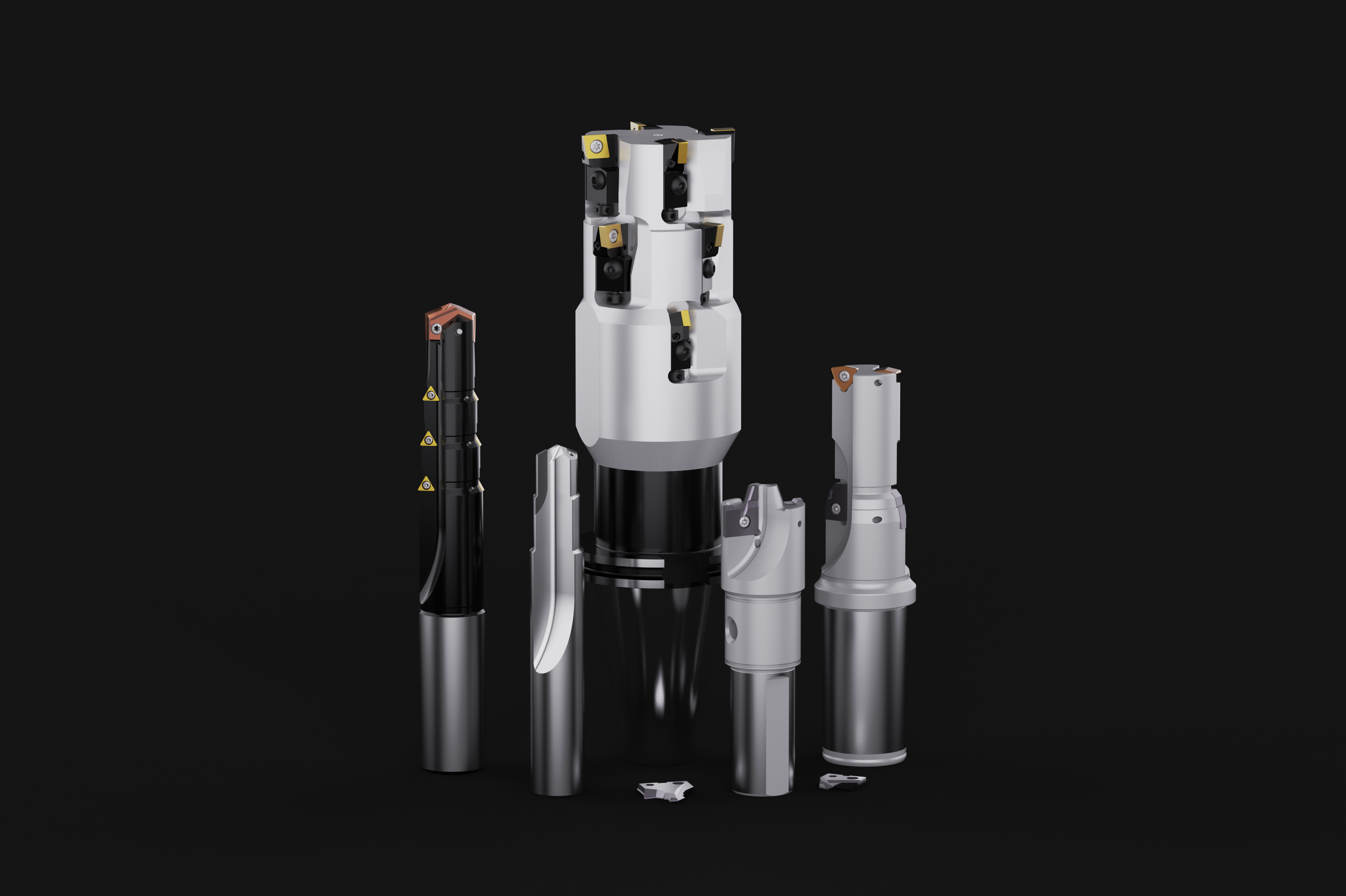Why Not Waterjet?
Waterjet cutting has carved a legitimate niche in material fabrication. This article looks at the process with an eye toward how waterjet can work for your shop.
#Basics
Manufacturing is always looking for ways to lower its costs and increase its throughput while maintaining quality. The drivers for these continuous improvements come from customers who are themselves driven by market forces beyond their control. The impact is a general and universal acceleration of the manufacturing process--from design to delivery--across the manufacturing landscape.
In response, shops of all stripes are looking for ways to satisfy these customer-driven demands. For metalcutting shops, the search often takes them beyond the realm of what many consider traditional metalcutting technology.
Featured Content
Abrasive waterjet technology is one of the newer cutting systems available in today's market. They are quick, flexible and effective in meeting a wide variety of challenges among manufacturers. Years of development have resulted in improved wearability and control technology, making waterjet cutting systems competitive to other cutting methods.
Materials And Capabilities
The list of materials that a waterjet system will penetrate is significant. To date, applications have been used with foam, GIO phenolic, steel, armor plating, urethane, titanium, Kevlar, aluminum, linen phenolic, brass, neoprene, copper, stainless steel, spectra, fiberglass, corrugated cardboard, acrylic, ceramic tile, wood, rubber, glass, marble and granite.
Waterjet systems are also an attractive alternative to surface preparation. They strike a surface with such impact that coatings are instantly removed without the side effects of noxious dust that other methods may create.
The advantage of a waterjet cutting system is not limited to the wide variety of materials through which it cuts. Its effectiveness comes not only from what it does, but also from what it does not do.
Waterjet systems are an ideal process solution for cutting materials that are heat sensitive. Because it produces no HAZ (heat affected zone), waterjet is a candidate for applications where thermal induced micro-fractures or distortions are unacceptable. Waterjet's relatively cool cutting makes it temper neutral. Its cutting action will neither harden nor anneal an application material.
Environmental concerns related to the cutting of hazardous materials such as asbestos and fiberglass are reduced through the use of a waterjet cutting system. Airborne contaminants and fumes are significantly reduced or eliminated.
The erosion process of abrasive waterjet cutting creates no burring or rough edges. Often the necessity of additional finishing operations is eliminated.
There are no start holes created and parts can be optimally placed to fully utilize a piece of material. It also eliminates the distortion from compression that is created by traditional die cutting methods.
Applications
The spectrum of applications for waterjet cutting ranges from the delicate to the stubborn. U.S. Food and Drug Administration regulations allow the use of waterjet technology in cutting food items such as cakes, french fries, steak, poultry and fish. Waterjets have proven themselves as both efficient and sanitary. On the other extreme, abrasive waterjet systems (AWJ) bombard armor plating used in the assembly of M1 tanks and Bradley fighting vehicles. In between lies a wide spectrum of other applications. Artists, interior designers and shipbuilders are among the many who are embracing waterjet technology. Industries such as paper, textile, aeronautics and steel are routinely incorporating the technology into their manufacturing processes.
Thin, delicate rubber gaskets, previously cut by hand, are rapidly produced under the auspices of a waterjet. Complex heat exchangers, previously tackled with conventional cutting techniques, took several hours to complete. Waterjet dispenses them in a few minutes.
Metal fabricating has been quick to reap the benefits of waterjet technology. In an arena fraught with the woes of heat affected zones, burring, excessive fixturing and tooling requirements, increased costs due to excessive kerf with a lack of nesting capability, waterjet technology shows its true colors.
Waterjet Technology Versus Alternatives
Not all cutting methods are created equal. Traditional methods such as punching and plasma cutting will retain a place in the metal shop. They remain an economical method for certain applications.
These traditional methods, however, cannot compete with waterjet technology in several critical areas. Kerf width is a serious consideration when cutting expensive materials such as titanium, alloy steel, Inconel alloy and Hastalloy. Reduced kerf allows parts to be positioned closer together resulting in a net savings on materials. Other savings result from the nesting capability, which is an integral part of waterjet technology not normally associated with traditional cutting methods. Parts and pieces can be placed within unused space on the metal plate and bars. Material that would have been wasted if cut by traditional methods, is profitably used by waterjet technology.
Waterjet cutting expends minimal force upon the material being cut. The result is a significant reduction in fixturing (it is recommended that an operator still provide a limited amount of fixturing as a safety precaution). The force exerted by traditional methods can be excessive and require extensive time in fixturing. That same force may cause compression in some materials, reducing the precision of the cut. In other applications, the force causes the material to shift, thereby reducing the accuracy of the cutting medium. A waterjet does not move the material and can be relied upon to produce the same cut time after time.
Quite often, the contenders in the duel between cutting methods are reduced to laser cutting and waterjet cutting. Pitted against each other, it becomes an issue of time and the quality of the edge cut. Quality can range from minimal (Q=1) to excellent (Q=5). The quality is dependent upon the feed rate. Thinner materials can be fed faster than thicker materials and still achieve a high quality edge cut. Thicker materials can also achieve the same high quality edges, but the feed rate will be reduced.
Speed is certainly a concern in the high paced workplace. Figure 1 compares the cutting rates of lasers and waterjets for several materials. Normally there are significant reductions in cutting times with the use of an abrasive waterjet and there are instances where lasers retain an advantage.
Taking The Plunge
Change. We cannot ignore it, and we can only attempt to keep up with it. Materials and methods previously relegated to the traditional cutting methods are being sliced, diced and packaged using waterjet technology.
To help shops take advantage of waterjet technology, service centers have been formed to allow shops to determine the viability of waterjet processing before making the necessary capital investment.
Easijet Inc. is set up to provide training for shops looking to take on the waterjet process. That training includes new process techniques and applications for waterjet cutting. Easijet also provides a means for shops to share their knowledge.
As with most commercial technology, waterjet cutting services are only as good as the provider. A variety of parameters are configured for each project. Optimum type and flow of abrasive is determined. The orifice size, which regulates the volume of water flowing through the nozzle, needs to be set and decisions must be made regarding the height placement of the nozzle above the part. Determination of travel rates and resultant edge quality are critical.
Manufacturers of waterjet systems provide recommendations and databases for the parameters required in a variety of applications. However, a certain union of art and technology is what truly generates a quality product. The technicians bring to each project a certain expertise and experience.
Travel Rates (IPM)
| Material Thickness | 0.125" | 0.250" | 0.375" | 0.500" | |||||||||
| Q2 | Q4 | Laser | Q2 | Q4 | Laser | Q2 | Q4 | Laser | Q2 | Q4 | Laser | ||
| Aluminum orifice, nozzle 0.015", 0.045" |
ipm | 123 | 73 | 12 | 52 | 29 | * | 33.5 | 18.6 | * | 21.6 | 11.7 | * |
| Carbon Steel orifice, nozzle 0.015", 0.045" |
ipm | 42 | 25 | 80 | 17 | 10 | 45 | 12 | 6.6 | 30 | 7 | 4 | 25 |
| Stainless Steel orifice, nozzle 0.015", 0.045" |
ipm | 37 | 22 | 24 | 15 | 9 | 15 | 10.8 | 5.9 | 7 | 6.5 | 3.5 | 4 |
*unable to cut
Making The Flow Go
Waterjet cutting systems operate on the basic principle of erosion. Water, pressurized to 60,000 psi and focused in a narrow orifice as small as 0.003 inch, is directed at a material and cleanly passes through without shredding or crushing the material.
Three pre-process steps are generally required to change ordinary tap water into a tool capable of cutting titanium. First, the water is deionized through a reverse osmosis process. This process removes solids such as iron and calcium.
Next the water passes through a micro-filtration system that removes particles down to 0.45 micron. It's essential to start with very clean water in the system to maintain the pumps and high pressure seals. Without it, mineral deposits would develop, break off and eventually clog vital elements in the system.
Finally, the purified tap water enters an intensifier pump where it is pressurized from about 60 psi up to 60,000 psi. After these three steps (deionization, filtration and intensification), the waterjet is ready to perform.
For products such as paper, plastics, foods, rubber, insulation, and corrugated cardboard, water alone will penetrate the material. For harder materials such as metals, glass, and stone, an abrasive, usually garnet, is added to the cutting process.
In either case, the highly pressurized water or pressurized water and abrasive is passed through a narrow orifice in a cutting head positioned above the material to be cut. The size of the orifice is adjusted to suit the material density. Easily penetrated materials can be cut with an orifice as small as 0.003 inch while harder materials may require an orifice up to 0.030 inch.
The water leaving the orifice reaches speeds up to Mach 2.5 before striking the material to be cut. Materials lie on support grates held on tables that vary in size. Standard sizes are 4 by 8, 20 by 8 and 18 by 10 feet. Customized tables are also available for many applications.
Below the support grates, a pool of water diffuses the force projected by the highly pressurized nozzles. The water, once turned into a cutting tool, reverts back to its placid state.
Methods of controlling the cutting path range from basic mechanically-controlled motions to sophisticated computer numerical control (CNC) motion systems. The multi-directional cutting capabilities and optional multiple cutting heads further increase the cutting capabilities and flexibility of waterjet technology.
Standard waterjet cutting systems range in price from $75,000 to $250,000. Custom-designed systems can be created and integrated into a manufacturing process.
Designers of the systems fully understood the toll that such high pressure would extract upon the equipment. Easy and economical maintenance methods were developed as an integral part of the systems.
Routine maintenance requires periodic replacement of high pressure seals as well as monitoring of the hydraulic system and fluids. The incoming water system filters and high pressure water filter also require routine replacement. Seals and filters can be replaced in approximately 20 minutes. Heads can be replaced within a matter of minutes and are often removed and replaced by hand, requiring no tools.
RELATED CONTENT
-
Threading On A Lathe
The right choices in tooling and technique can optimize the thread turning process.
-
Start With The Right Speeds And Feeds
Running rotary milling cutters at the proper speeds and feeds is critical to obtaining long tool life and superior results, and a good place to start is with the manufacturer's recommendations. These formulas and tips provide useful guidelines.
-
How To Passivate Stainless Steel Parts
You've made sure the parts were machined to spec. Now, make sure you've taken steps to protect those parts in the condition your customer expects them.


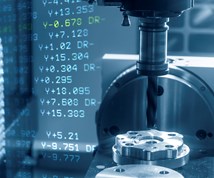
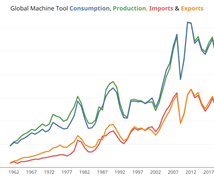
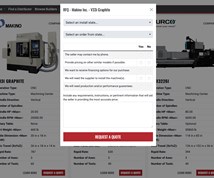

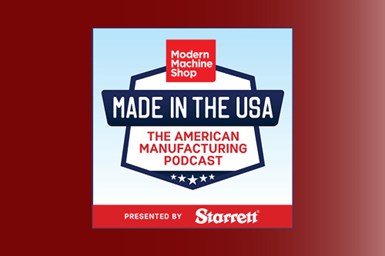
.1692800306885.png)

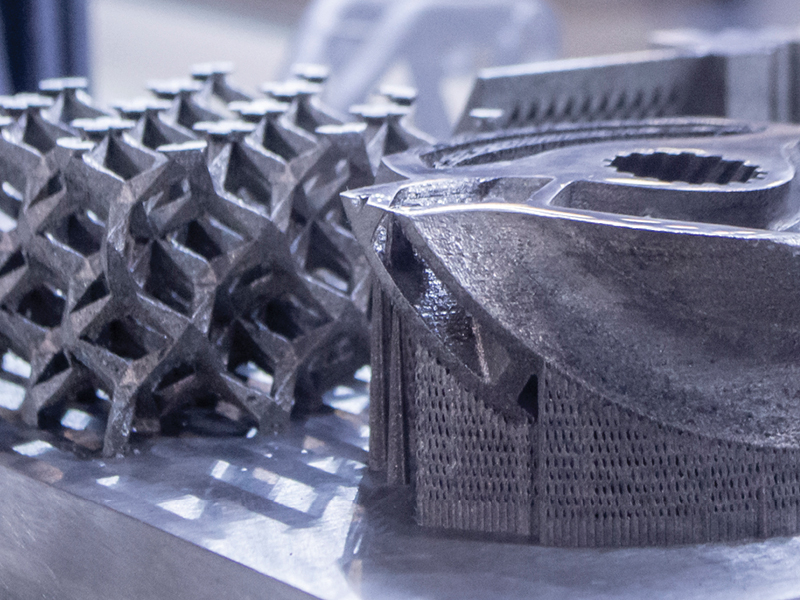
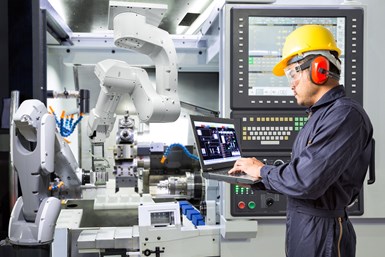

.1687801407690.png)
